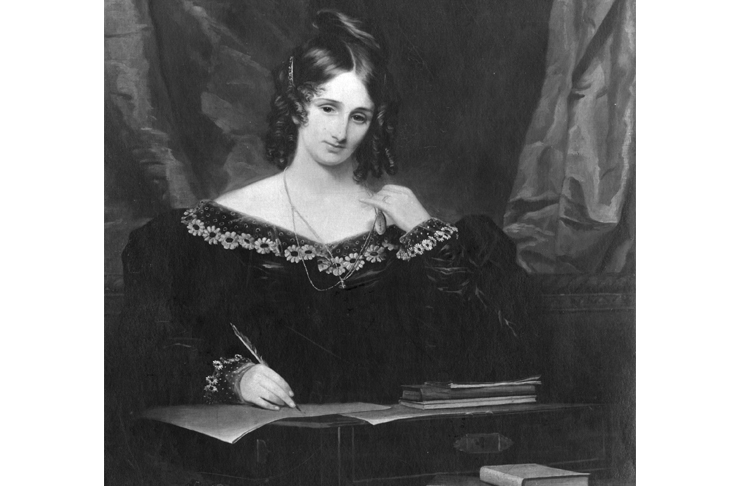At the time of writing, December 2020, the #newedition movement can be considered a truly global phenomenon. As it sets about the work of re-writing world history in the manner it should always have been written, it represents the most significant mountain that our noble progressive movement has yet climbed. But the one thing that I hope is always remembered is that this movement owes its origins to a small group of people, including my son and myself, in Melbourne. Yes, it is a phenomenon we can proudly call Victorian.
It all began in 2018 at the High School that my son attends. It is a school under the authority of the Department of Education and Training and I am a parent-member of the nine-person School Council. During the July holidays, parents and students were invited to participate in a special meeting to discuss the literature texts for the second semester. This was not a meeting to decide upon choice of texts. It was to discuss a matter that had been a source of unrest for some time, namely, that the classical texts that had long been taught at the school no longer reflected appropriate values. The purpose of the meeting, then, was not to identify texts for removal from the curriculum, but to propose amendments to the existing texts in order for them to become more suitable for educational purposes and more palatable for parents. The intention was to embark upon exploratory discussions with a view to the creation of new editions of these works for adoption by the school as well as the department, for mandatory introduction across the state, hopefully from as early as 2019. Accordingly, everyone who attended the meeting did so in the knowledge that they were furthering a virtuous cause. For texts to be truly classical, they needed to be timeless, and the purpose of this meeting was the benevolent one of suggesting alterations to these works to ensure their currency in the twenty-first century and subsequent timelessness into the future.
To give an indication of how this meeting proceeded, one of the texts discussed was Mary Shelley’s Frankenstein, which was ear-marked for the curriculum in 2018 because this was the 200th anniversary of its publication. After the chairperson introduced the novel and invited discussion, initial responses were to the effect that this was one text that should be left alone. The author was a woman who had published under her own name rather than adopting a male pseudonym, which was to be celebrated. A father of one student also reminded everyone that Mary Shelley had been the daughter of Mary Wollstonecraft, who in turn had been the author of A Vindication of the Rights of Woman (1792) and had attempted suicide because of mistreatment by men.
Then, as for the text itself, it was noted that the lead character, Victor Frankenstein, was a white male who wrought havoc and fear. To this point of the discussion, then, it was agreed that no changes were warranted. But a range of views were aired with regard to the monster. After attention was drawn to the fact that the monster was a white male who demanded of Victor Frankenstein that a female companion be created for him, it was queried whether it was appropriate for a text to depict the introduction to the world of an artificial white heterosexual male. But, came a reply, this was a monster, one that everyone else wanted dead, so that is fine. My son, who had read the book ahead of time, contributed by pointing out that the monster was thoughtful, articulate and intelligent, which were qualities associated with a woman. The chair-person noted this but said that, if the monster is to be female, Victor Frankenstein must be as well, for we could not have a female creature being created by male hands.
The discussion continued in this circular fashion until it was settled that the text be amended to make it clear that when creating the monster Victor Frankenstein gave it gender-neutral genitalia, and that all references to the monster wanting a female companion have the word ‘female’ removed, in this way lending ambiguity to its sexuality.
Also discussed was Jane Austen’s Pride and Prejudice, which had been a staple component of the curriculum for years. The theme of this book, marrying for love rather than for money or convenience, was generally lauded but there was discomfort with the fact that all of the relationships and aspiring marriages were heterosexual and of single ethnicity. It was determined that for this work to be on the right side of history, the character of Mr Darcy, the suitor for Elizabeth Bennet, be converted to a wealthy black man who had recently migrated to England and acquired property in the same district as the Bennets. And it was agreed that the other relationships in the book be amended to give representation to female-female and male-male love. With respect to this last point, there was discussion of the book’s opening line: ‘It is a truth universally acknowledged that a single man in possession of a good fortune, must be in want of a wife.’ Various amendments were offered including one curious one from a boy of about fourteen. He was a student I did not recognise and was presumably new to the school, although I have not seen him since. He stood up and said that the line should be changed to read: ‘It is a truth universally acknowledged that a single white man looking to advance his fortunes in the world must be in want of a husband.’ He was going to talk further but with the eyes of the room turning on him he sat down. In the end it was decided to leave this line alone provided the other changes relevant to the characters associated with relationships were adopted.
This is how the seeds of the movement were sown but work still lay ahead. Later in 2018, after the school’s written submission to the department seeking authorisation for these new editions was initially rejected, further meetings were held and a revised proposal was resubmitted. When this too was rejected in early 2019, the school opted to protest the matter in the streets. In a decision that was unanimously approved by the School Council, it was agreed that students, parents and teachers would take to the city with placards and chants in an effort to overturn the departmental ruling. There was difficulty finding a date for this because the school calendar was already crowded with events such as the parent-student-teacher protest against the Adani coal mine, the visit and address to the students by a feminist writer, the student-parent-teacher protest on asylum-seeker families in detention, the Year 12 girls’ Training Days on University Rape Culture, and the teacher-student-parent protest on discrimination against the LGBTI community. But a date was found and as soon as it was confirmed broadcast emails were sent to the parent body encouraging them to take their children out of school on this day to join the protest.
It was this event that brought the school’s activities to a wider audience. In the lead-up we promoted it with a social media campaign, and it was my son who thought of #newedition and who was the first person to ever type it (well, it was my idea but I am happy for the credit to go to him). Then on the day itself, images of our students making impassioned pleas for all racism, sexism and homophobia to be edited out of historical literature were disseminated on social media and syndicated on news bulletins around the world. The reaction was instantaneous. Indeed no previous digital or other phenomenon can be said to have taken hold of global consciousness as quickly and comprehensively as this did. People from all different countries began identifying texts with #newedition and suggesting alterations to characters and plotlines. They entered into the spirit of devising catch-cries and slogans, for example ‘the whitewashing of literature’ and ‘Frankly my dear, I wish I had given a damn #franklymydear #newedition’. And before long people were contributing all manner of new ideas. It was suggested that, going forward, publication of works by white heterosexual males be suspended until such time as works by people of all other identities had caught up in number and were equally represented – a suspension that was anticipated would need to be in force for several centuries. The terms of reference of the movement were broadened to all published material through history, not just literature. That is, any published work that was thought to contain material that was out-of-step with progressive values, whether a history, a biography, a novel, a work of non-fiction or a commentary, was marked for revision with #newedition.
Then as momentum continued to build the movement was extended to incorporate the visual arts. Any historical painting that was stickered #newedition would be retouched to ensure a more appropriate representation of identities, and statues of figures who are considered to have been oppressors would be removed and replaced by a statue representative of their oppressee.
With this, #newedition came to signify what it does today – a complete overhaul of history in all of its recorded aspects. For the progressive movement it represents the final frontier, the accomplishment of which will silence all non-conforming voices once and for all, and, after this last generation of non-conformists has died out, bring true unity of mind to the world.
Movie stars and former prime ministers and presidents have given it their unequivocal support. Songs have been written to celebrate it, the most popular of which is a slow ballad that ironically laments the passing of the version of world history that has been authoritative until now.
With funding from internet conglomerates, corporate #newedition villages have been established in cities worldwide and the movement’s motto, ‘not turning a new page in history − creating an entire #newedition’, is seen on billboards, trains, planes and everywhere you turn. The new international leaders of the movement describe the work as the retrospective censorship of recorded history in order to right the wrongs of Western civilisation, and they say that, provisionally at least, it represents an epoch – the Reformation of the sixteenth century, the Renaissance of the seventeenth century, the Enlightenment of the eighteenth century, and #newedition of the twenty-first century. The proviso of course is that the Reformation, the Renaissance and the Enlightenment are themselves subject to revision and possible re-naming.
Much of the work is being undertaken via crowdsourcing, with people invited to revise works and send their draft revisions to the nearest #newedition village, but the scale of the task that lies ahead is lost on no one. All that is lost, regrettably, is the memory of the movement’s origins. May I respectfully propose, if it not be thought to be above my station, that the final statue of a white male ever to be made, which would be the first and only such statue in the #newedition, be one that memorialises the efforts of one or two people from the modest little school in Victoria where it all began.
Got something to add? Join the discussion and comment below.
Get 10 issues for just $10
Subscribe to The Spectator Australia today for the next 10 magazine issues, plus full online access, for just $10.
You might disagree with half of it, but you’ll enjoy reading all of it. Try your first month for free, then just $2 a week for the remainder of your first year.














Comments
Don't miss out
Join the conversation with other Spectator Australia readers. Subscribe to leave a comment.
SUBSCRIBEAlready a subscriber? Log in